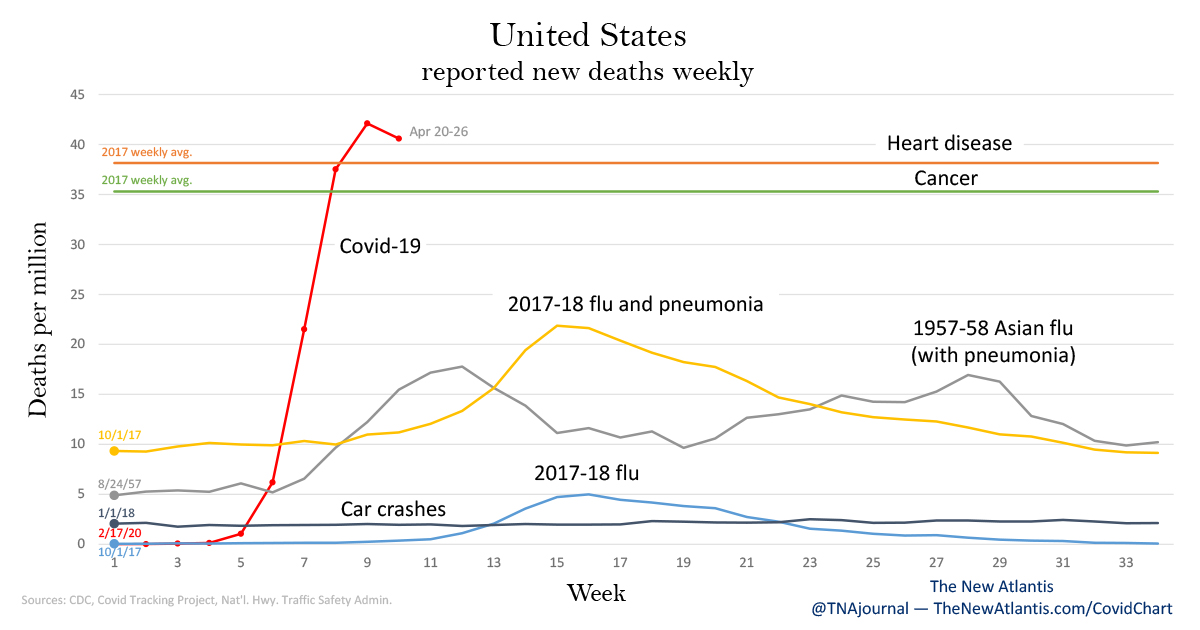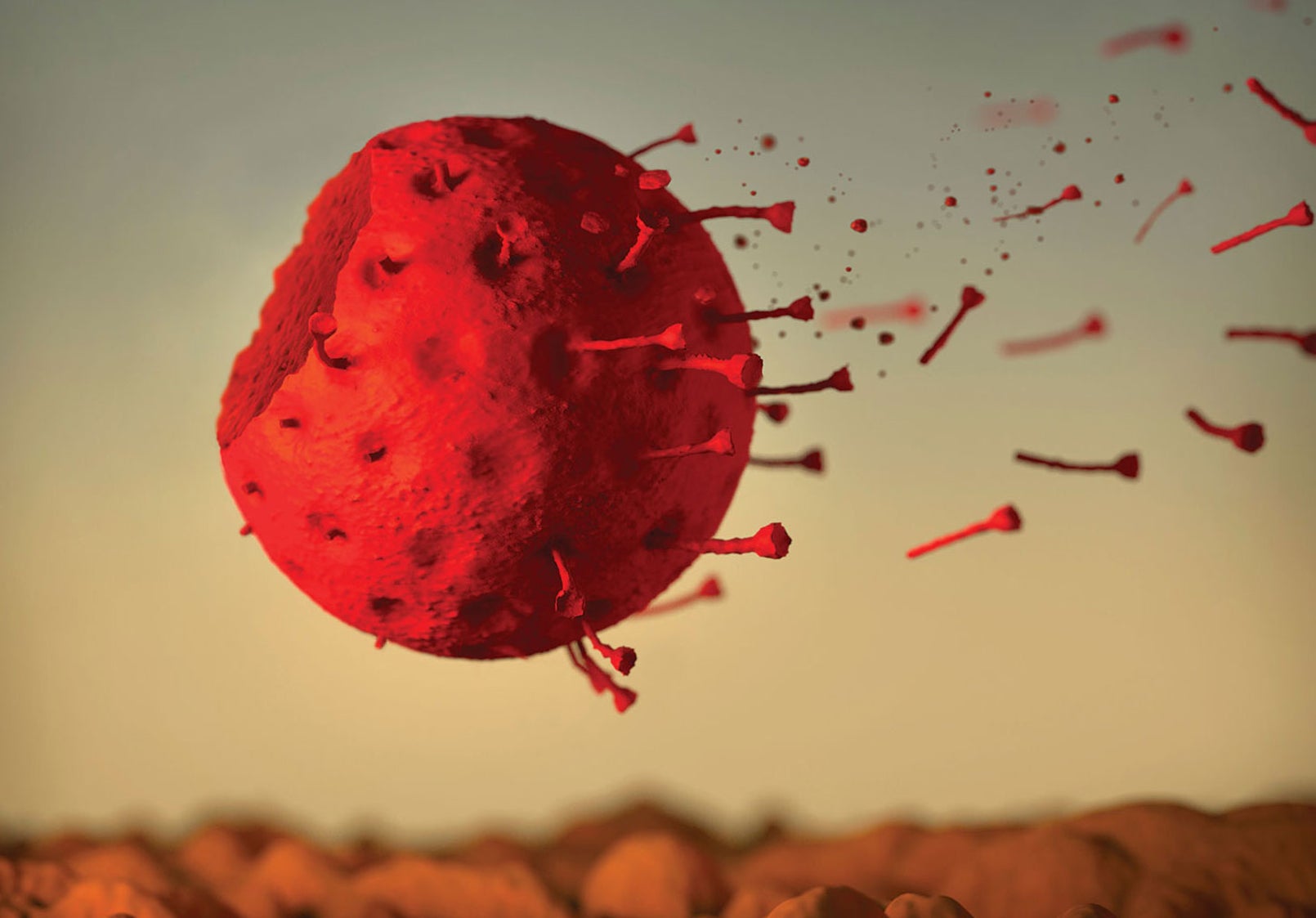Combating COVID-19: Lessons from Singapore, South Korea and Taiwan How have Singapore, Taiwan and South Korea leveraged their IT infrastructure and capabilities to deal with the crisis? What could other governments learn from their experience? ..........
Not Like the Flu, Not Like Car Crashes, Not Like... It’s about the spike.
Donald Trump reveals plans to bring back his '25,000 people rallies' as he says he will travel to Arizona and Ohio, saying 'I'd like to get out' - and says of the virus 'it's going to leave'
NYC subway to end 24-hour service for first time for coronavirus disinfection
Japanese island suffering second wave of coronavirus after lifting lockdown too early
Singapore's coronavirus spike sends world a wake-up call Migrant worker infections turn success story into cautionary lesson ...... Surging coronavirus infections in Singapore's migrant worker communities have underscored the difficulty of stomping out the disease -- and may offer lessons for other countries.
Newspapers, television, and social media have been awash with reports about COVID-19 developments.
.......... the Federal Communications Commission (FCC), the country’s communication regulator, gave temporary access to the 5.9GHz spectrum for rural wireless broadband. Temporary access was granted to 33 fixed-wireless internet service providers (WISPs) ...... The agency’s stated aim behind this move was to bring access to telehealth, distance learning and telework to rural communities in several states. ....... in a bold legislative move, Congress relaxed several restrictions on the use of telemedicine to treat people covered under the Medicare program. .......unlike in the world of business, there are no unambiguously measurable financial targets — such as profits, market share, unit costs and market capitalization – in the public administration of health
......... howSingapore, Taiwan and South Korea
overcame daunting challenges and deployed technology to combat the COVID-19 pandemic. .......... There is perhaps no better example than that of Singapore when it comes to using ICT for rapid, large-scale social orchestration. ......... Singapore, which has a population density as well as a population comparable to that of New York City, reported its first case of COVID-19 on January 23, while New York confirmed its first case on March 1. Singapore had 9,125 cases on April 21, compared to New York’s 251,720 (and 11 deaths to NYC’s 14,828 on April 21). ............. At the heart of Singapore’s response to the pandemic is contact tracing, a process by which every newly discovered infected case (person) is mapped on to all the people that might have been potentially infected by that person. Within 24 hours of each new infection being discovered, more than 100 contact tracers working around the clock put together the contact map for that person. ...................... “Singapore invested heavily in developing capacity and an infrastructure to deal with these types of outbreaks over the past 10 to 15 years, including increasing capacity for intensive care and patient isolation facilities, building expertise in infectious disease.” ................... Singapore’s digital technological capabilities paid off. They enabled the state to takeextraordinarily thorough and swift measures at scale in the face of the pandemic
. ................ The capabilities that South Korea developed to fight disaster stemming from geopolitical conflicts were amplified by its use of digital technologies to orchestrate a swift and cohesive response at scale to the pandemic. ............ Ever since the SARS epidemic of 2003, Taiwan has been in a state of constant readiness to combat epidemics arising from China, given the deep and extensive contact between the two countries. As many as 2.71 million visitors from China entered Taiwan in 2019. ............. After the SARS outbreak in 2002, Taiwan had created a disaster management and recovery center — National Health Command Center (NHCC) – which focused on large disease outbreaks and served as the operational command for a coordinated response across multiple agencies and regions. In the face of the rapidly escalating pandemic, Taiwan was able to calm its citizens and convince them that the government was in control of several critical tasks. These ranged from border control, quarantine monitoring and resource mobilization to the effective management of logistics and operations. Careful and accurate communication helped Taiwan keep its citizenry well informed and fight misinformation.The vice president of Taiwan, an epidemiologist by training, led the public information campaign from the office of the president.
................ Singapore’s Prime Minister Lee Hsien Loong’s use of Facebook to reach out to the citizens. The PM posted “…Once a case is confirmed, within two hours [contact tracers] create a detailed activity log of the patient’s movements and interactions in the 14 days before admission….” ............ The ministry of health also provided regular and consistent WhatsApp group updates of what was happening in the country and the extent to which the virus had spread. The government opted for transparency and people were told in stark terms what could happen next. Not only did the delivery of information on social media channels help control panic, it also strengthened the credibility of the public administration in the eyes of its citizens. ..................the investment in administrative capabilities in public health was strengthened by its digital technology capabilities and vice versa.
............. when a new COVID-19 case was found in a neighborhood, people within that geography were alerted by information sent to their mobile phones. The alert provided information about the patient’s demographic details as well the patient’s travel history. .......... Sharing of aggregate population trends and tracking of events in real-time are possible even in regimes that have stringent privacy laws. South Korea’s Personal Information Protection Act (PIPA) provides for comprehensive safeguards for the protection of citizens’ privacy. Taiwan, too, has very strict data protection and privacy legislation including the Personal Data Protection Act, which regulates collection, processing and use of personal data. These laws have not restricted these countries from using information effectively when a swift response was called for in an emergency. .............. a contact-tracing smartphone app – TraceTogether – developed by GovTech that identifies people that have been within two meters of a patient for at least 30 minutes for follow up action by contact tracers. ............. Taiwan tracks quarantined peoples’ cell phone signals for possible violation of quarantine requirements. Texts to those found outside the quarantine zone as well alerts to enforcement authorities are sent by the automated system. Taiwan imposes a fine on people who leave quarantine without a phone. ............ Singapore, South Korea, and Taiwan all made a distinction between the use of data to advance commercial objectives and the use of data to protect the well-being of citizens in an emergency. In all three cases, the use of data was restricted to narrowly defined and specific usage contexts that were only related to responding to the contagion. ..................The authority that moves large numbers of people to cohesive action is not the coercive power of the state as much as the authority of specialists and the credibility that they command.
............. Singapore’s citizens have always been led by a technocratic government often praised for its efficiency. Within a week of China’s lock down of Wuhan, the government of Singapore closed its borders, set up a virus fighting task force and imposed stringent home quarantine measures. The initial response was led by Vernon Lee, director of the communicable diseases division at Singapore’s Ministry of Health, who saidhis goal was to get ahead of the pandemic rather than to chase it and fall behind
. ............ Taiwan’s big data efforts coopted the public as collaborative partners. Rather than treat patients as careless offenders, the CECC took the view that the population faced a looming peril which was best combatted using collective measures. ..............Taiwan’s approach was not only ‘big data’ but also ‘big tent’ – which means Taiwan did not seek to assign blame or take punitive measures against those infected and/or quarantined.
........... the approval ratings of the president and premier were about 70% and the minister of health and welfare was over 80% ..............Taiwan .. has 420 cases and 6 deaths with a mortality rate of 0.25 per million people (the U.S. has a mortality rate of about 85 per million people).
........... a month after the surge in new cases, New York City reported about 7,500 new cases a day. ........... In each case, Singapore, South Korea and Taiwan learned from the past and put in place a set of competencies and response capabilities. These capabilities required effective communication techniques, rapid dissemination of information, the ability to recognize emerging patterns and act on them, and finally, the ability to reach the individual citizen and orchestrate cohesive group action. ............. Any large-scale deployment of an information network will of course carry with it the hazards of cyber-attacks. Such hazards are no different from those faced by financial systems, public transportation systems, and indeed the power grid. ....... robust protections are needed both for the physical security of the information processing network as well as the privacy of individuals from overreach by commercial entities and bureaucrats ........ Indeed, the internet itself was first designed with the objective being able to withstand just about any catastrophe.We are now officially living an era that many scientists call Anthropozoic or Anthropocene. An era where a class of man...
Posted by Partha Banerjee on Thursday, April 30, 2020
Not Like the Flu, Not Like Car Crashes, Not Like... It’s about the spike.
Donald Trump reveals plans to bring back his '25,000 people rallies' as he says he will travel to Arizona and Ohio, saying 'I'd like to get out' - and says of the virus 'it's going to leave'
NYC subway to end 24-hour service for first time for coronavirus disinfection
Japanese island suffering second wave of coronavirus after lifting lockdown too early
Singapore's coronavirus spike sends world a wake-up call Migrant worker infections turn success story into cautionary lesson ...... Surging coronavirus infections in Singapore's migrant worker communities have underscored the difficulty of stomping out the disease -- and may offer lessons for other countries.








